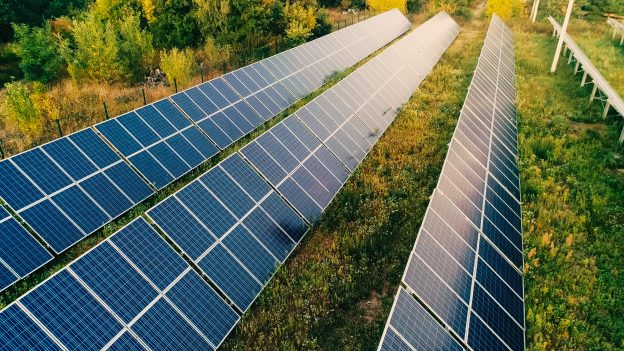Polysilicon:
Polysilicon prices continue to go down throughout the week. The mainstream concluded price for mono recharge polysilicon is RMB 49/KG, while mono dense polysilicon is priced at RMB 47/KG and N-type polysilicon is currently priced at RMB 57/KG.
Based on trading trends, polysilicon manufacturers are consistently lowering their quoted prices, yet ingot manufacturers are not increasing their demand due to their substantial inventory. Consequently, polysilicon manufacturers face greater inventory pressure. This imbalance in supply and demand is further exacerbated by the continuous increase in polysilicon production capacity, while ingot manufacturers continue to deplete their existing inventory. As a result, the oversupply situation remains entrenched. Presently, leading manufacturers offer N-type polysilicon prices ranging from RMB 55 to RMB 58 per kilogram. Moreover, some orders at the RMB 58/kg mark have been canceled, indicating ingot manufacturers' pessimistic outlook on future N-type polysilicon prices. Looking ahead, polysilicon inventory is expected to rise further, compounded by the influx of new capacity, thereby sustaining the surplus supply and driving polysilicon prices downwards.
Wafer:
The prices of wafer have declined further throughout the week. The mainstream concluded price for M10 P-type wafer is RMB 1.65/Pc, while G12 P-type wafer is priced at RMB 2.15/Pc. The mainstream concluded price for M10 N-type wafer is RMB 1.60/Pc and G12 N-type is priced at RMB 2.30/Pc.
In the realm of supply and demand dynamics, certain tier-2 and tier-4 wafer manufacturers are strategizing to curtail production and gradually scale back their operational capacities. Yet, even with these adjustments across the wafer sector, projections suggest that wafer inventory levels will persistently hover at elevated levels by month's end, underscoring the entrenched nature of the supply-demand imbalance. Presently, wafer manufacturers continue to grapple with significant losses, with prices for 182mm P-type wafers (with diameters of 247mm and 256mm) plummeting to the range of RMB 1.60 to 1.65. Meanwhile, N-type wafer prices exhibit volatility, oscillating between RMB 1.55 and 1.60. Some manufacturers are even willing to offer prices as low as RMB 1.5X to expedite shipments and deplete inventory. Analyzing the current inventory dynamics reveals that P-type wafers constitute approximately 10%, 210mm N-type wafers (including rectangular variants) account for 14%, and 182mm N-type wafers (including rectangular variants) make up nearly 77%. In summation, amidst significant declines in polysilicon prices, stabilizing wafer prices proves challenging for manufacturers. Consequently, wafer prices are anticipated to continue their downward trajectory this week, with the possibility of further declines looming, albeit at a restrained pace.
Cell:
Cell prices have declined greatly this week. The mainstream concluded price for M10 cell is RMB 0.340/W, while G12 cell is priced at RMB 0.350/W. The price of M10 mono TOPCon cell is RMB 0.42/W, while that of G12 mono TOPCon cell is RMB 0.43/W.
In terms of supply and demand landscape in cell sector, the cell production in this month basically is in line with the demand in the downstream sector. Therefore, the cell inventory will only increase slightly but remains at the reasonable level. The price trends lie in the cost. Currently, wafer prices see great reduction and module manufacturers force cell prices down, and there are more OEM cells enter into the market, the cell prices have fluctuated. Currently, 182mm P-type cell price has declined to RMB 0.33-0.34/W, and the price of 182mm N-type price decline to RMB 0.40 - 0.43/W. On the flip side, the supply and demand of 210mm cells remain stable and its price remain stable for the time being. Looking forward, the wafer prices keep declining and the module manufacturers keep forcing cell prices down, it may be more difficult for cell manufacturers to maintain stable prices.
Module:
Module prices have remained stable throughout the week. The mainstream concluded price for 182mm facial mono PERC module is RMB 0.93/W, 210mm facial mono PERC module is priced at RMB 0.95/W, 182mm bifacial glass PERC module at RMB 0.94/W, and 210mm bifacial glass PERC module at RMB 0.97/W.
In the realm of supply and demand, the module sector is poised for continued production growth in response to escalating demand and order volumes. Planned module production is set to increase by 7%-9% compared to the previous month. While the Indian module markets have experienced a slight decline due to tariff influences, other regional module markets have maintained a positive outlook. Cost continues to reign supreme as the primary determinant of prices. Presently, polysilicon prices continue their downward trend, making it challenging for prices throughout the industry chain to remain stable. Consequently, manufacturers appear inclined to initiate price competition once more by lowering prices. In a bid to capture more market share, some manufacturers are becoming increasingly proactive in reducing their prices.
In summary, module prices have remained stable this week. However, pressure from both cost factors and customer demands is mounting, setting the stage for intensified price competition in the future. Consequently, a decline in module prices is anticipated.







